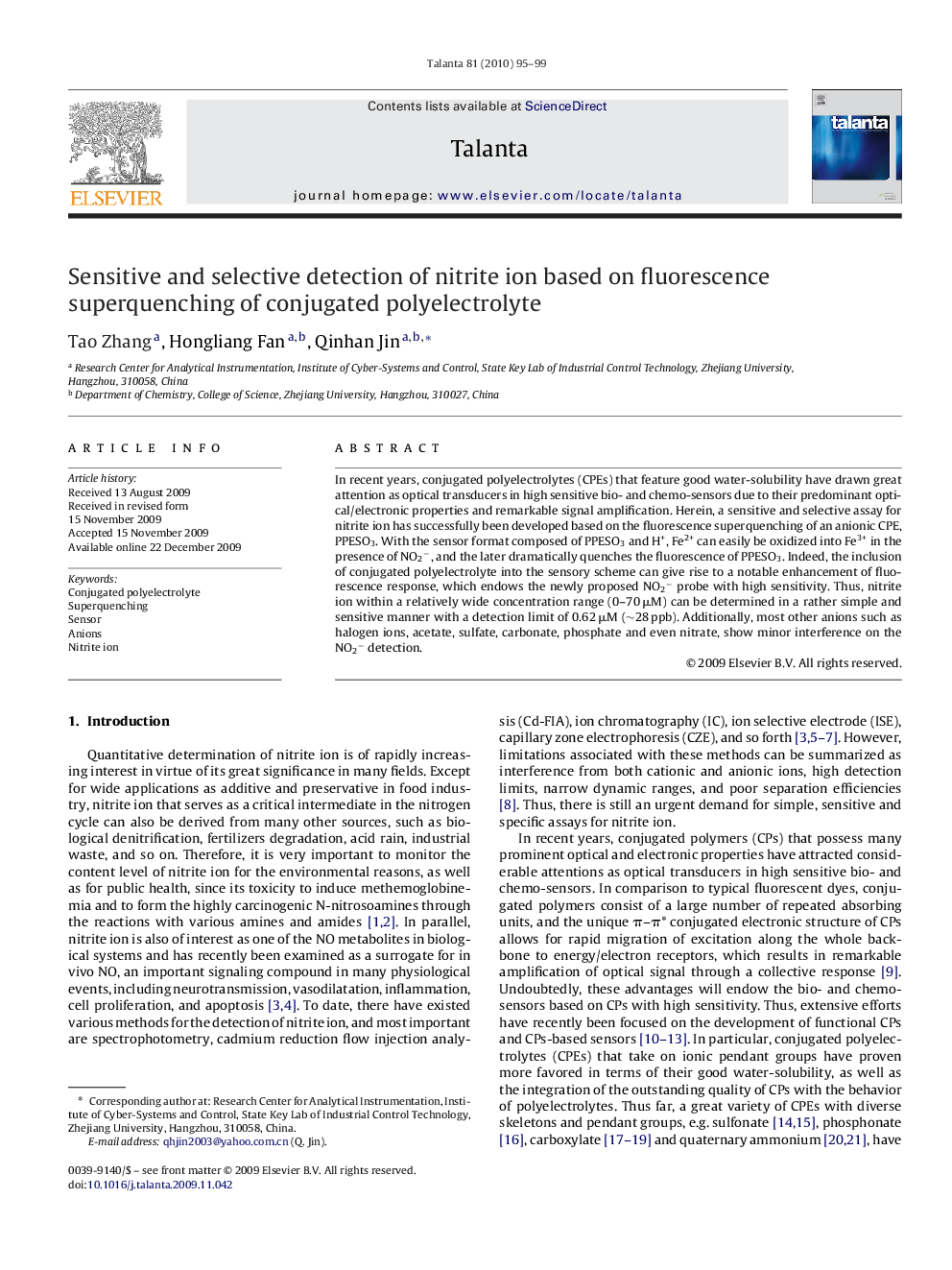| Article ID | Journal | Published Year | Pages | File Type |
|---|---|---|---|---|
| 1246618 | Talanta | 2010 | 5 Pages |
In recent years, conjugated polyelectrolytes (CPEs) that feature good water-solubility have drawn great attention as optical transducers in high sensitive bio- and chemo-sensors due to their predominant optical/electronic properties and remarkable signal amplification. Herein, a sensitive and selective assay for nitrite ion has successfully been developed based on the fluorescence superquenching of an anionic CPE, PPESO3. With the sensor format composed of PPESO3 and H+, Fe2+ can easily be oxidized into Fe3+ in the presence of NO2−, and the later dramatically quenches the fluorescence of PPESO3. Indeed, the inclusion of conjugated polyelectrolyte into the sensory scheme can give rise to a notable enhancement of fluorescence response, which endows the newly proposed NO2− probe with high sensitivity. Thus, nitrite ion within a relatively wide concentration range (0–70 μM) can be determined in a rather simple and sensitive manner with a detection limit of 0.62 μM (∼28 ppb). Additionally, most other anions such as halogen ions, acetate, sulfate, carbonate, phosphate and even nitrate, show minor interference on the NO2− detection.
